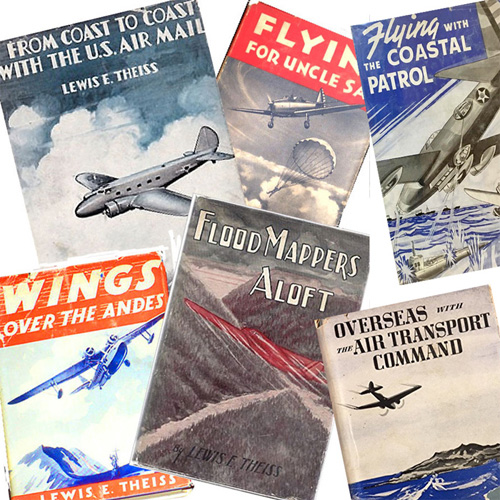
Book Covers from the Ginger Hale series by Lewis Theiss.
Sky Road to Adventure: How a Generation of Young Readers Became Pan Am Fans
By Eric H. Hobson, Ph.D.
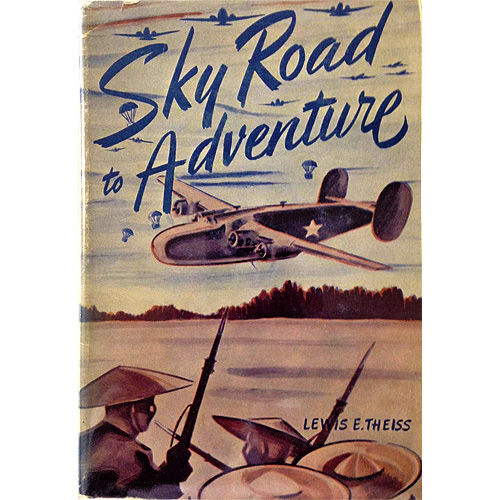
The final book of twelve in the “Ginger Hale Series” by Author Lewis E. Theiss, “Sky Road to Adventure“ was published in 1945.
Starting in 1933 young readers (particularly boys) followed fictional Pan American Airways (PAA) Captain Joseph “Ginger” Hale as he and his crew flew around the world into ever-present, and often-implausible, adventures. Yet, facing near-misses, such as in Wings Over the Andes (1939), at the controls of a Sikorsky S-43 “Baby Clipper” flying shrinking circles between the walls of a South American box-canyon while dense fog rose from below and clouds descended from above, readers knew Ginger would prevail. He did so annually as each new title in the twelve-volume Ginger Hale series appeared in bookstores and on library shelves like clockwork.
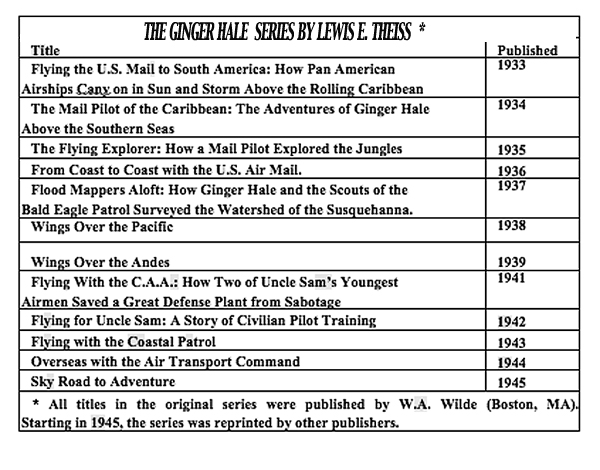
These same readers looked at Ginger’s employer, Pan American Airways, as the exemplar of American entrepreneurial success and a source of intense national pride. PAA was the world’s first global airline, an unabashed symbol of American economic/social values that exerted and exported U.S. political/ideological influence as the airline’s footprint expanded. In 1934, Ginger Hale series author, Lewis E. Theiss reminded his readers that, “American achievements in aviation should thrill every patriotic citizen of the U.S.A.”
About PAA specifically, he added,
“To have linked more than thirty nations in one vast airway that totals more than 30,000 miles; to have developed regular and dependable flight schedules between the continents of North and South America; to have pioneered the way for regular crossings of the Atlantic; and to be feeling the way toward a similar service across the Pacific – all these things have been done by a flying organization that is typically American, the Pan American Airways.”

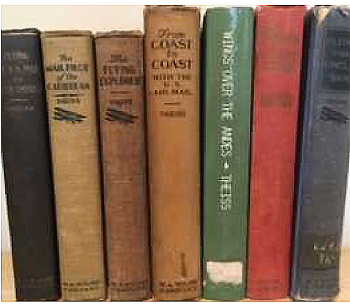
Books from the Ginger Hale Series (from Eric Hobson’s Collection)
Theiss’ Ginger Hale series was among dozens of aviation action-adventure series written for pre-teen/teen readers during the first half of the twentieth century.[1] Aviation historian David Vaughan, considers Theiss the genre’s best among the authors who generated 300+ titles to meet reader demand, because “It is a rare situation when one discovers both technical detail and good style in a single writer.” Critically speaking, these books are not paragons of great literature. Still, their teenage readers never expected much more that fast-paced, fun reading experiences centered around airplanes and adventures.
Theiss’ central character, Joseph “Ginger” Hale is as two-dimensional as the average hero in the genre. Vaughn summarizes the stereotypical hero as “a hard-working, goal-oriented (almost excessively so) youth who parts from his farm and family with scarcely a backward glance” and “whose success stories result from the combination of industry, energy, and technical mastery.” [2] Within this stereotype, Lewis Theiss shaped Ginger Hale as an ambitious, hard-working, patriotic recent high-school graduate and Eagle Scout from Pennsylvania, “rugged and robust physically, honest and square in character, kindly at heart, and skilled in hand and finger.” Besotted by airplanes and determined to become a commercial pilot, Ginger dreams of a career with PAA.
If Captain Hale’s character was formulaic, so too was the world he inhabited and the overarching plot he experienced. To achieve his career goal, Hale travels to Miami and joins PAA as an entry-level laborer building the Dinner Key airport where his bosses recognize Ginger’s talents and character and fast-track his commercial aviation training. Like Ginger (and the series’ readers), they envision Ginger as a Pan American Airways Clipper Captain.
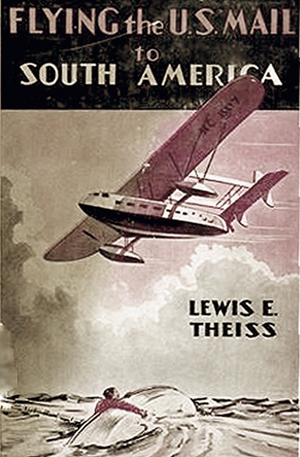
Across the three-hundred pages of Volume One, Flying the U.S. Mail to South America: How Pan American Airships Carry on in Sun and Storm Above the Rolling Caribbean, Hale progresses from visiting Miami relatives, to shoveling sand on a PAA construction crew, to installing a state-of-the art radio system for the Dinner Key control tower/radio room, to joining the PAA system-wide radio-messaging team. As busy as he is though passing these milestones, Ginger also takes flying lessons, repairs a damaged Coast Guard rescue plane (while at sea), survives a boat sinking (while sharks circle), and saves a PAA colleague from drowning.
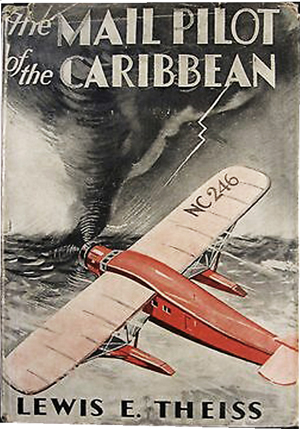
By page three-hundred-twenty of Volume Two, The Mail Pilot of the Caribbean: The Adventures of Ginger Hale Above the Southern Seas, Ginger is co-piloting a Sikorsky S-38 amphibian on Caribbean routes (mainly the Havana, Cuba to Merida, Mexico run), having mastered airplane mechanics and radio communication, “blind” flying and conversational Spanish. [3] Within this time frame, he foils both a human- and a gold-smuggling operation, delivers rabies serum to Grand Cayman saving four children’s lives (while bucking a hurricane), and uncovers a long-running Havana-based U.S. passport forgery ring.
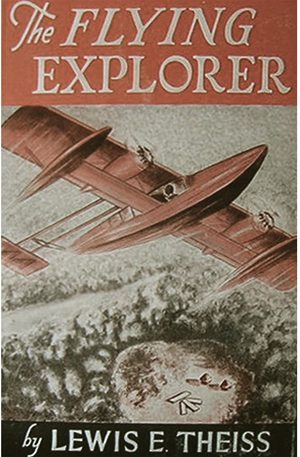
In the third installment, The Flying Explorer: How a Mail Pilot Explored the Jungles, Ginger moves into the Senior Pilot ranks permanently and commands PAA crews (or, serves as an ever-present adult/mentor background character) across ten more books in adventures which span the globe.[4] As Captain Hale attends to PAA’s central business of flying mail, express freight, and passengers, high-ranking PAA officials repeatedly divert his contractual activity by picking him for special assignments: charter flying for a film-making/hunting expedition in central South America, courier tasks for the U.S. Government, covert work for the U.S. State Department in the Far East, and war-related tasks in the series’ final volumes. While always exceeding his superiors’ expectations for professionalism, technical competence, leadership and diplomacy, Ginger and his crewmates foil German and Japanese spies and saboteurs, thwart Axis airline expansion in Brazil, rescue downed Army aviators in Newfoundland, and fly victory-securing supplies from Puerto Rico through Brazil across North Africa and India, then over the Himalayas to Chinese soldiers pushing Japan off of the Asian continent. [5]
As they “flew” with Ginger Hale, author Theiss gave readers intimate tours of PAA’s expanding routes: these included detailed explanations about such non-flying, yet important, subjects as the lengths to which PAA went to build bases on Pacific atolls complete with hotels, restaurants, fuel depots, and tennis courts. Readers learned the geography, topography, and meteorology connected to PAA’s established Caribbean routes (1933 & 1934 titles), PAA’s U.S. east coast & west coast feeder/connector lines (1936 & 1939 titles), PAA’s Central and South America western rim routes (1939), PAA’s new trans-oceanic routes — trans-Pacific (1938) and trans-Atlantic (north and southern routes (1943), and, finally, PAA’s trans-Africa/Indian subcontinent/“the Hump”/China route (1944) by then subsumed into the U.S. military’s war-time Air Transport Service, although it was managed in large part by PAA personnel. Likewise, these readers learned fine-level design-and flight-handling-data about PAA’s fleet (the Flying Boats manufactured by Sikorsky -- S-38, 40, 42, 43 — Martin -- M-130 — Boeing: B-314 — and Consolidated - The Commodore; and, the land-based aircraft manufactured by Ford -Tri-motor— Lockheed - The Vega - and Douglas — DC-3/C-47, DC-4/C-54) [6] Finally, these readers received technically accurate introductions to general and specific mechanics of flight, and the training undertaken by dreamers such as Ginger Hale to achieve and maintain competence as a professional airline pilot in a dangerous, demanding and ever-changing job.

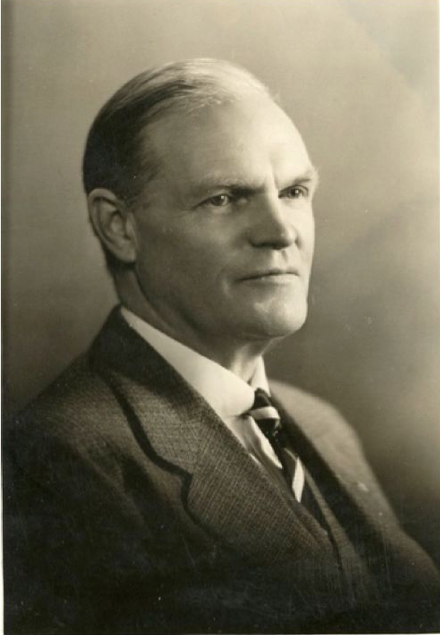
Lewis E. Theiss (Bucknell University Archives)
Theiss, a former newspaper reporter turned Bucknell University professor, was not an aviator, airline executive, nor an aviation engineer. Yet, his work is rated above his competitors in this niche market. How then did a juvenile fiction author write with such technical precision about commercial aviation and infuse each narrative with detailed information about PAA corporate policies and operating procedures?
Lewis Theiss relied on Pan American Airways itself.
Lewis Theiss was an experienced newspaper reporter, after all, who knew how to research a story, develop a cadre of reliable sources, and adhere to high standards for narrative accuracy. And, this professionalism shows in Theiss’ writing. “One of the unusual…features of (these) books,” as Vaughn notes, “is that the technical information described in them has been thoroughly researched.”
During the fifteen years he devoted to writing the Ginger Hale adventures, Theiss maintained an active partnership with PAA personnel across the organization whose assistance he openly and generously acknowledged. And, while many PAA personnel provided plot points, technical specifics, and granular-level accuracy, none were as important to the series’ success as William Van Dusen, founder of PAA’s Public Relations department, Edward P. Critchley, Operations Manager of PAA’s Caribbean Division, and Captain Charles A. Lorber, whose career experiences undergird much of the Ginger Hale series.

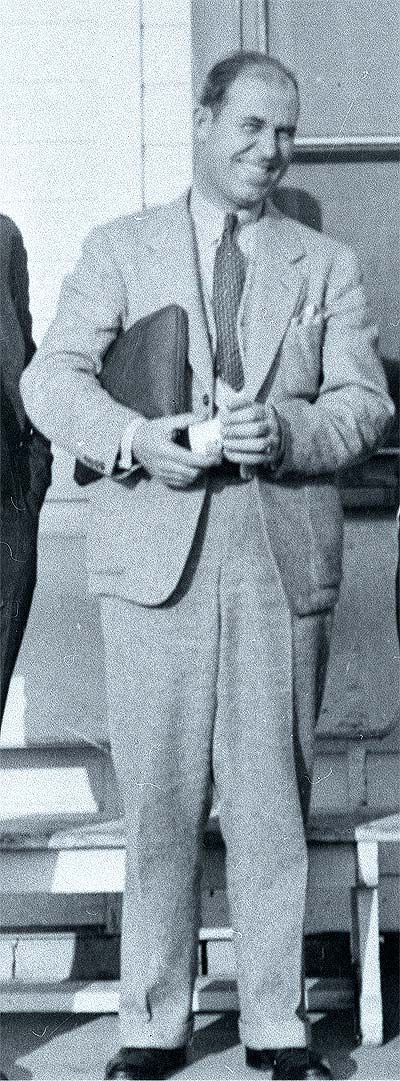
William Van Dusen c. 1930 (Photo: University of Miami Special Collections)
In 1928, PAA founder Juan Trippe recruited former newspaperman and Dow-Jones employee William Van Dusen to found the company’s Public Relations department based out of PAA’s New York City headquarters. Van Dusen was a dogged publicist who worked to achieve Trippe’s goal to make the Pan Am brand the global synonym for commercial aviation. Van Dusen and his PR team worked to position the PAA name in front of as many audiences as possible. If he could secure coverage without cost, all the better: he shifted savings to other attention-getting projects.
TTo this marketing end, Van Dusen joined many of PAA’s earliest and most high-profile inaugural flights throughout the Caribbean and the Pacific to write accounts for immediate publication. He staged route-opening tours/ceremonies that included celebrities and dignitaries whose presence at events guaranteed press coverage, placed newspaper reporters, magazine writers, and newsreel camera crews on board aircraft and enabled them to file from-the-air dispatches for immediate publication, and ensured that major world press services covered PAA’s Technical Advisor, Charles Lindbergh’s activities for the company. Along these lines, Van Dusen penned two long articles in 1929 for The Saturday Evening Post recounting PAA and Lindbergh’s archaeological survey of the Yucatan Peninsula in cooperation with Carnegie Institution researchers.[7]
Van Dusen recognized in Theiss an experienced writer who, by 1932, had penned dozens of widely read, technically solid and upbeat, hero-centered adventure stories books for younger readers in which the central character saves the day in the guise of just doing his job within some emerging technological domain (radios, dirigibles, airplanes). To a character, Theiss’ young heroes were morally upright, energetic, smart, resilient, respectful, and educated young men, and these were the very qualities that PAA recruitment materials (developed by Van Dusen’s office) positioned as the values PAA demanded of all personnel across its ever-expanding system, regardless of any one job function. As such, Van Dusen was happy to help when Theiss inquired about the airline’s willingness to allow him to feature PAA in his new aviation series. Possibilities for free and positive PAA product placement in an uncontroversial context was a good thing, particularly since a Theiss-PAA partnership gave Pan Am direct marketing to a next-generation of potential customers numbering in the tens of thousands.
Beyond offering plot ideas and having his marketing team inform Theiss about corporate developments that might provide narrative possibilities, Van Dusen steered Theiss to Miami, Florida, PAA’s 1930s activity hot spot. There he arranged for PAA officers to grant Theiss whatever assistance he asked for. Van Dusen wanted Ginger Hale flying for PAA when Theiss’ books hit the shelves; he did not want this flyboy hero to soar across the pages of widely read books wearing a competitor’s uniform.
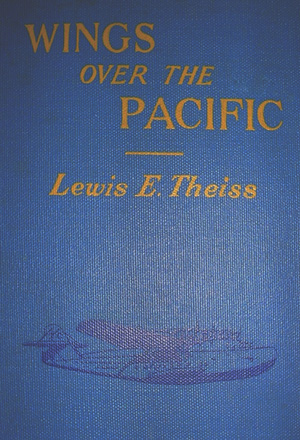
Theiss was not shy to leverage Van Dusen’s door-opening moves on his behalf. He understood the gift presented in Van Dusen’s actions on his series’ behalf, as reflected in acknowledgement statements Theiss placed in 1938’s Wings Over the Pacific preface:
“to Mr. William Van Dusen, head of the Pan American information bureau, as well as to that flying service itself, is hereby expressed the gratitude of both the writer and the publisher for the information, cooperation, and photographs that have been so valuable in the making of this volume.”
Theiss expressed similar nods to PAA’s public relations staff help throughout the series’ history even as, by the series’ end in 1945, Van Dusen was no longer a part of PAA, having returned to active military service in the U.S. Naval Reserve during World War II.


Ed Critchley Operations Manager, PAA Caribbean Division, Miami in 1934 (Pan American Air Ways, April 1934)
PAA’s long-serving Director of Operations for the Caribbean Division, Edward P. Critchley, was the PAA employee to whom Theiss owed the greatest debt for the Ginger Hale books’ ability to stand above other airplane books. He knew every aspect of Pan Am to the core: Critchley joined PAA in 1928 as the base manager for the airlines only U.S. site, Havana, Cuba, before returning to Miami in 1929 to oversee what would become PAA’s home base, Dinner Key on Biscayne Bay, a position he held from 1931 to 1943, bookending Theiss’ years writing Ginger Hale tales.
Ed Critchley was essential to Theiss’ ability to tell exciting, yet accurate, tales grounded in the realities of commercial aviation’s first decades. His expertise covered the entire scope of PAA’s logistics because Critchley oversaw PAA operations in the Caribbean and Central American. Critchley knew practically every PAA employee during the company’s early years, and he heard the full range of hair-raising, head-scratching, eye-rolling stories from the field that filtered across Dinner Key as crews flew in and out. He could offer Theiss a smorgasbord of factual flying goodies that would appeal to Theiss’ readers. Among these included such, you-can’t-make-this-stuff-up episodes as having a 60lb mailbag ejected through a S-38 roof during severe turbulence (and the momentary fear that the radioman was gone, too), nearly losing a radioman to a lightning strike to a Clipper’s trailing antenna, recounting the antics of the Cozumel base mascot (a saltwater crocodile), and details surrounding the discovery of any variety of contraband on PAA aircraft.
For thirteen years Lewis Theiss drew on this access into PAA to glean plot ideas, explain minutia of airplane maintenance and flight and system-wide logistics, and to have all twelve manuscripts read for accuracy. And, although he did not fly for PAA, Critchley was a veteran pilot and World War I combat aviator. This background meant that his knowledge was deeper than Theiss might have known at their first meeting. Most important, however, was because of his position in PAA, when Critchley asked folk to talk to Theiss or take him along on flights, PAA personnel recognized that Ed spoke for himself and the company.
Theiss’ appreciation for Critchley was frequent and effusive. In 1938 he acknowledged the “kindly and constant help of Mr. Edward P. Critchley, Operations Manager for the Pan American organization, who suggested many features of this story, and who painstakingly checked each chapter as it was written, to guard the writer from errors.” Theiss’ praise of Critchley continued in 1939 when he wrote that,
Whatever readers of this book may find herein of technical interest or suggestiveness, they will owe their pleasure therein to Mr. Edward P. Critchley, Operations Manager for Pan-American Airways. He not only suggested the general theme of the story, but also proposed several of the incidents used – always with an eye to possibilities and probabilities under given conditions…Most of his suggestions grew out of actual experiences of Pan-American pilots.
Of these plot sources, one in particular stood out: veteran PAA aviator Captain Charles Lorber.

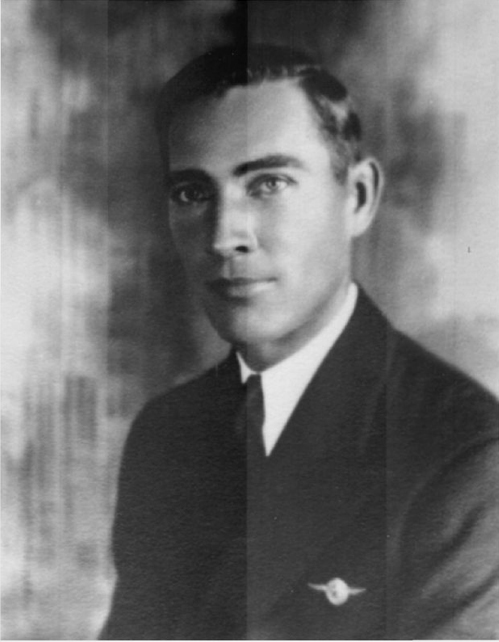
Pan Am Captain Charles Lorber (Haynes Family Archive)
Charles A. Lorber, whom Chief Pilot Edwin Musick recruited to PAA in 1928 soon after he joined the company, met Lewis Theiss in Miami during Theiss’ first research trip in late 1932. PAA (ergo, William Van Dusen) arranged for Professor Theiss to accompany Lorber on a December 1932 Caribbean mail/passenger run from Miami to Kingston, Jamaica where he stayed a week observing PAA activity and interviewing PAA personnel before returning to Miami to continue his research. Following his return, Theiss told a Pan American Air Ways writer, “Words seem utterly inadequate to tell you how much I enjoyed my Jamaica trip.”
For many years, according to Lorber’s great nephew, John Haynes, Theiss’ base for his annual Miami research trips was the boarding house run by Lorber’s mother, Kate; there, he joined PAA crew members who made Ms. Lorber’s boarding house their home-away-from-home.[8] When Lorber’s paths crossed Theiss’ in Miami, he tutored Theiss in the rigors and rituals of commercial aviation from crew perspectives. Captain Lorber explained the nuances that made up the complex routines flight crews followed in the air and on the ground, but also the “routineness” of most flights. Behind all of this activity, boring or not, sits latent alertness that compounds crewmembers’ daily physical and mental fatigue, and aggregates these many stressors. Lorber detailed the responsibilities and expertise of each crew member, challenges brought on by changing weather patterns, nuances of radio protocols, and he recounted exciting moments he and colleagues experienced during their careers. Among these lessons, Theiss found plot points that he worked into many series titles.
Of the adventures Lorber recounted however, the 1931 PAA charter assignment flying for Americans in Brazil’s frontier state, Matto Grosso, stood out. “This period of (Lorber’s) flying,” Theiss wrote, “was a modern Odyssey, told to me while we were soaring together over the Caribbean Sea, and no one could hear such an enthralling tale without wishing to pass it on.” Lorber’s Brazil adventure became the core of the third Ginger Hale book, The Flying Explorer, and is the least fictional of the series.
Working from Captain Lorber’s Matto Grosso Expedition notebook, scrapbook, photo album, post-expedition publications, and flight log, Theiss crafted a thinly fictionalized account of a PAA Sikorsky S-38 crew based in remote western Brazil on a six-month charter. Lorber and his two PAA crewmates (Juan Sauceda, co-pilot/mechanic & Hans Due, radioman/navigator) experienced enough near-misses and incidents that required extraordinary flying ability and tight teamwork that Theiss did not need to gin-up the usual mix of edge-of-the-chair moments he relied on to keep his readers enthralled in other volumes. The near-fatal crash of Italian aviator Count Robilant, the indigenous Bororo people’s Tiger-Dance, and the one-thousand mile evacuation of an expedition member for emergency medical care following an August 1932 jaguar hunting accident are all verified among published and archived accounts about the Matto Grosso Expedition.[9]
And, as always, Theiss gave credit for his book’s strengths where it was due, telling his readers that, “The story came from Charles A. Lorber, senior pilot for the Pan American Airways, who piloted the plane that actually flew an exploring party which penetrated part of the Amazon basin.”

Theiss always portrayed PAA and its personnel in positive light, even as he positioned Ginger Hale and his crewmembers under intense situations throughout the series’ twelve volumes. Under his pen, the company and its personnel acted as paragons of professionalism and patriotism, honesty and virtue, even if PAA passengers and other characters did not always rise to the same standard. There was a too-convenient good-guy/white-hat vs. bad-guy/black-hat moral equation at work in all twelve books that can raise readers’ eyebrows. Yet, this too-pat reality was the norm across the entire genre of adolescent aviation adventure fiction.
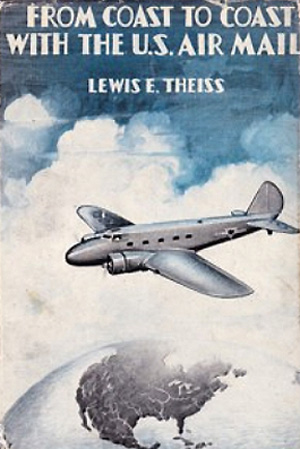
It is easy to view the Theiss-PAA cooperation in the Ginger Hale series as a merely opportunistic, quid pro quo arrangement. Seen through this lens, Theiss gets a “sure thing” narrative, while PAA receives enviable product placement. However, in opposition to such a jaded contemporary perspective, Theiss’ enthusiasm for PAA and its achievements seems genuine. Even when in the 1936 title, From Coast to Coast with the U.S. Air Mail, which includes United Airlines aircraft as the narrative’s central transportation vehicle, Pan American Airways Captain Ginger Hale is the story’s hero. He starts and ends his adventure in PAA facilities on both sides of the North American continent, having carried out a sensitive task asked of him by his employer and his government. The overriding message was straight-forward: America trusts PAA to do important work.
PAA reciprocated in this decade-plus partnership and treated Lewis Theiss well by keeping his Ginger Hale series in front of the corporate community. Announcements updating Theiss’ research and writing appeared in the company’s in-house monthly newsletter, Pan American Air Ways. Readers of the January 1934 issue learned that
Lewis Edwin Theiss, professor of journalism at Buknell Univeristy, and author of 23 boy’s books, has made the Miami-Kingston round trip for the purpose of securing material for the second of his volumes based on Pam American Airways. The title will be “Flying with Pan American.” His last book was called “Flying the U.S. Mail to South America,” and included a great deal of material concerning operations at Miami.
Van Dusen’s staff also included just-off-the-press reviews of Theiss’ earliest Ginger Hale books.
The July, 1938 Pan American Air Ways informed its readers that Lewis E. Theiss’ newly released book, The Mail Pilot of the Caribbean: The Adventures of Ginger Hale Above the Southern Seas:
“The latest in a series of juvenile aviation stories by Dr. Theiss, professor of journalism at Bucknell University is virtually a story of Pan American Airways. It continues the life-story of a young boy who won his way into a junior pilot’s berth on the international air transport system and dramatically portrays the qualities of courage, dependability, knowledge, and fortitude required of a pilot in an organization whose great ships ply their way in storm and sunshine, in winter and summer, over the Atlantic and Caribbean, carrying passengers, express and mail to the countries of the West Indies, Central and South America.”
The reviewer’s claim that the new book “is virtually a story of Pan American Airways” might seem hyperbolic; however, in this case, it is accurate. Ginger Hale books were steeped in all things PAA: each volume from 1933 to 1945 bled PAA blue and white.
When their noses were not pressed into a book’s pages as they devoured Ginger’s latest adventure, the series’ devoted readers scanned the skies for PAA aircraft, longed to meet a PAA employee, and saved pennies to fly someday to exotic PAA destinations. Many, believing that their reading-fueled dreams could come true, expected to join Captain Ginger Hale among the ranks of PAA.
Theiss was among the best writers of his day in selling American youth on the wonders of aviation. Even in 1945 at the end of the Ginger Hale series, he remained bullish on aviation, writing, “Pessimists have long told us that opportunity for youth no longer exist, that there are no new frontiers. The frontier of aviation is as great a frontier as any that ever existed. It is a field for countless careers to dazzle the imagination.” The young readers who followed Ginger Hale as he achieved his dream to fly for PAA, believed, as did Theiss, that, “In all the earth there is nothing to equal the equipment and the performance of the Pan American Airways.”

Footnotes
[ 1 ] Aviation series were a profitable niche within a larger juvenile adventure series market that included the ubiquitous Hardy Boys, Nancy Drew, and Tom Swift series. For a comprehensive, yet readable, review of the aviation subgenre, see Fred Erisman’s books. Boys’ Books, Boys’ Dreams, and the Mystique of Flight (TCU Press, 2006) and From Birdwomen to Skygirls: American Girl’s Aviation Stories (TCU Press, 2009).
[ 2 ] Side-kicks/mentees, Peewee Dewire and Colvin Criswell who join the series in 1937, shared these same stock characteristics.
[ 3 ] PAA required pilots to be multilingual and capable of repairing all aspects of their aircraft.
[ 4 ] “Contrived” hardly describes Ginger Hale’s progress through the PAA ranks. Under Theiss’ pen. Ginger moves from 50 hours of flight time at the start of volume one, to the 1200 required to move into the right-hand cockpit seat. He aces every certification test needed along the way including mechanical, radio, and blind flying in a none-too-precise “several months.” Then, another 1000 hours materialize in Hales’ flight log which moves Ginger to the left-hand command seat. It’s no wonder that during much of the series Hale is referred to as PAA’s youngest captain!
[ 5 ] From a contemporary position many passages in the twelve books are objectionably racist, xenophobic, jingoistic, and historically myopic, and, while they reflect dominant attitudes of the day, they make for uncomfortable reading today.
[ 6] Theiss introduced new aircraft in the series in close synchronicity to each aircraft’s entrance into PAA service.
[ 7 ] To learn more about this story, read Eyes in the Sky: Charles Lindbergh & the Birth of Aerial Archaeology.
[ 8 ] Although Lorber’s flight logs and other related papers have been lost, an autographed and personalized copy of The Flying Explorer, sent to Kate Lorber by Theiss, remains a family treasure.
[ 9 ] To learn more, read “Pan Am NC-146-M Introduces Medevac Flights to South America.”
Works Cited
“Author Prepares New Volume About Airways.” Pan American Air Ways, 5.1 (Jan. 1934), p. 11.
“Ed Critchley is AD’s 30 Year Man.” Pan American Airways Clipper, Atlantic Division, 16.9 (Oct. 1957), p. 1.
Erisman, Fred. Boys’ Books, Boys’, and the Mystique of Flight. Forth Worth, TX: Texas Christian University Press, 2006.
Haynes, John. Personal communication. 7 January 2019.
“The Book Pilot – The Mail Pilot of the Caribbean.” Pan American Air Ways 5.5 (July 1934), p. 12.
Theiss, Lewis E. Flood Mappers Aloft: How Ginger Hale and the Scouts of the Bald Eagle Patrol Surveyed the Watershed of the Susquehanna. Boston: W.A. Wilde, 1937.
-----. The Flying Explorer: How a Mail Pilot Explored the Jungles. Boston: W.A. Wilde, 1935.
-----. Flying for Uncle Sam: A Story of Civilian Pilot Training. Boston: W.A. Wilde, 1942.
-----. Flying the U.S. Mail to South America: How Pan American Airships Carry on in Sun and Storm Above the Rolling Caribbean. Boston: W.A. Wilde, 1933.
-----. Flying with the C.A.A.: How Two of Uncle Sam’s Youngest Airmen Saved a Great Defense Plant from Sabotage. Boston: W.A. Wilde, 1941.
-----. Flying with the Coastal Patrol. Boston: W.A. Wilde, 1943.
-----. From Coast to Coast with the U.S. Air Mail. Boston: W.A. Wilde, 1936.
-----. The Mail Pilot of the Caribbean: The Adventures of Ginger Hale Above the Southern Seas. Boston: W.A. Wilde, 1934.
-----. Overseas with the Air Transport Command. Boston: W.A. Wilde, 1944.
-----. Sky Road to Adventure. Boston: W.A. Wilde, 1945.
-----. Wings Over the Andes. Boston: W.A. Wilde, 1939.
-----. Wings Over the Pacific. Boston: W.A. Wilde, 1938.
Vaughn, David K. “The Educating Story-Teller: Lewis Theiss and the Jimmy Donnelly Air Mail Books.” Dime Novel Round-Up, 61 (June), 1992: 42-49.
“William Van Dusen Dies at 74; Ex-Official at Eastern Air Lines.” New York Times, 3 March 1976, p. 39.
